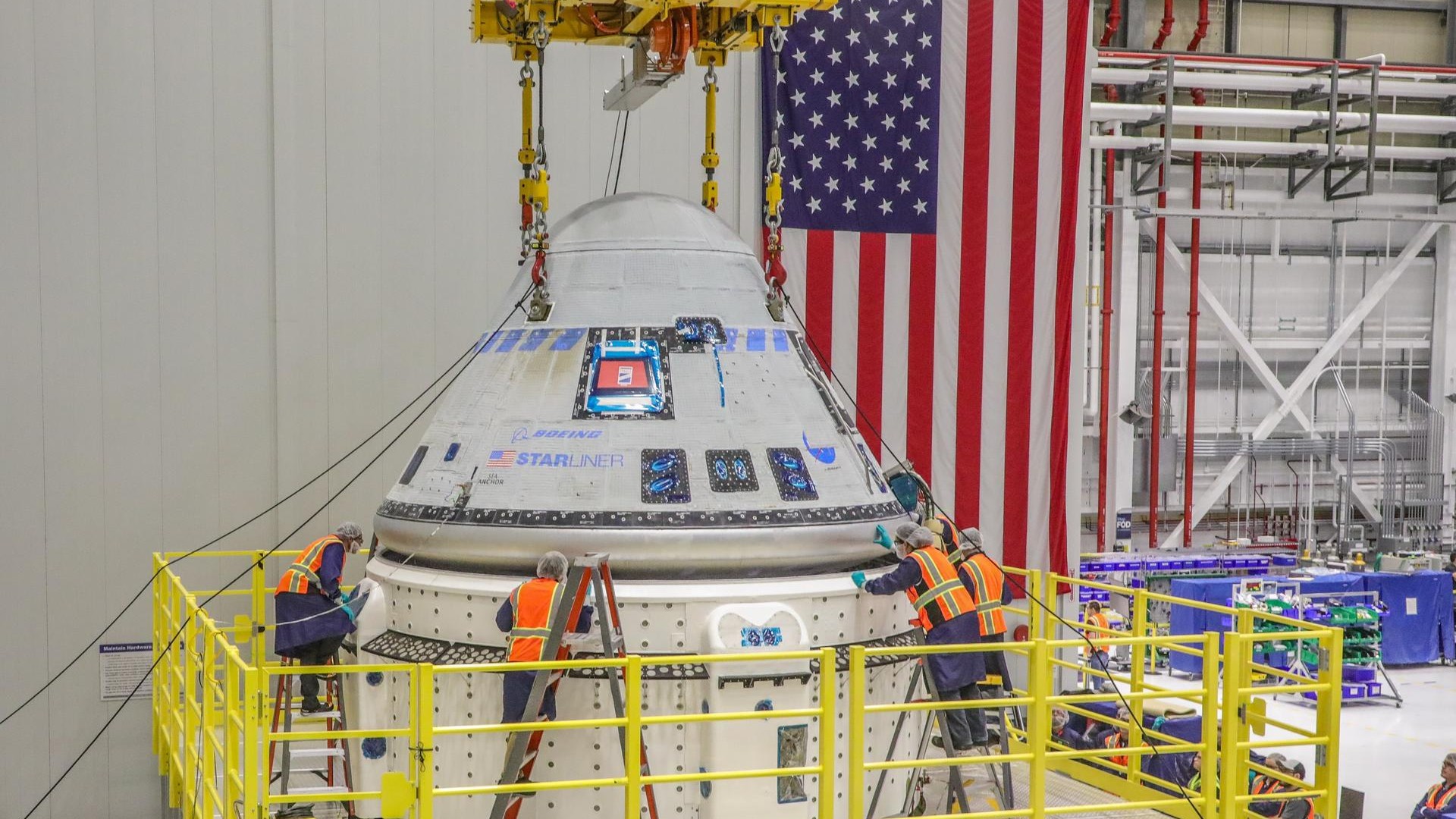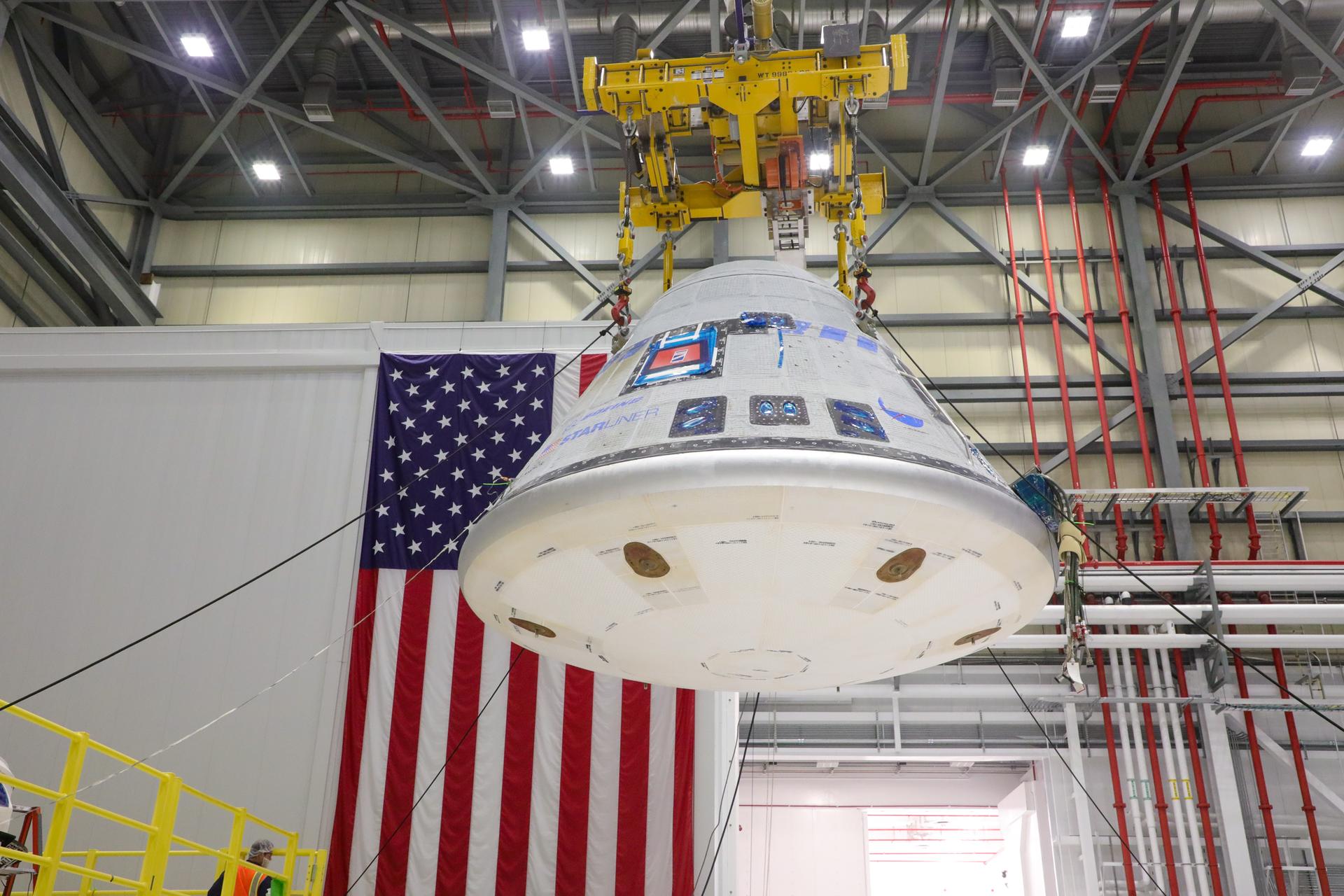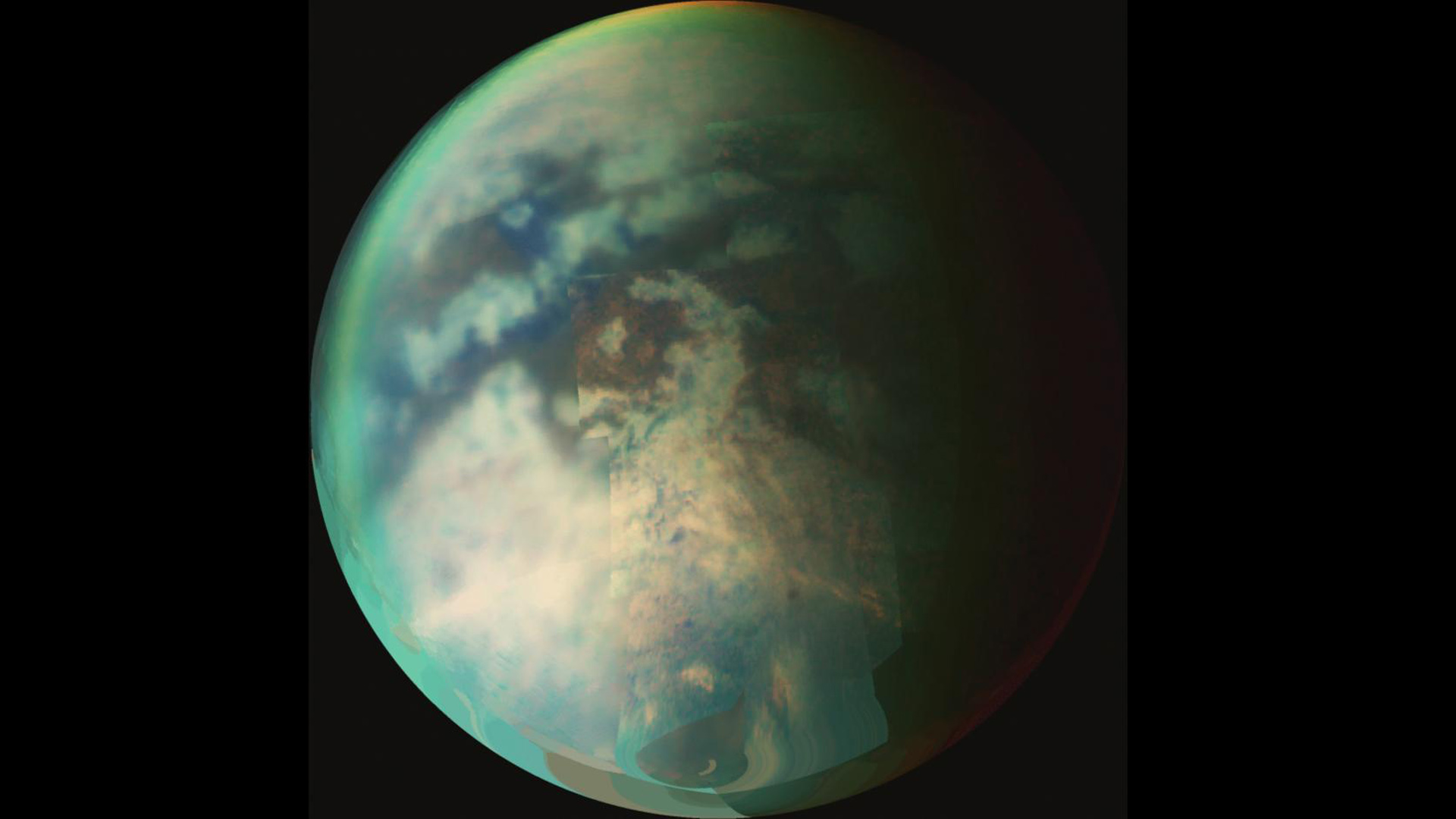Boeing's Starliner crew capsule channels R2-D2 ahead of astronaut test flight
No word yet on whether or not Starliner can replay a hologram of Princess Leia.

Boeing's Starliner crew module looks like it would fit right in wandering the deserts of Tatooine alongside C-3PO.
Starliner resembles the lovable droid R2-D2 from the "Star Wars" franchise in newly released NASA photos, which were taken while the capsule was being mated to a new service module ahead of its crucial Crew Flight Test (CFT) to the International Space Station (ISS).
The mating process took place at the Commercial Crew and Cargo Processing Facility (C3PF - not C-3PO) at NASA's Kennedy Space Center (KSC) in Florida. KSC is next door to Cape Canaveral Space Force Station, from which CFT — Starliner's first-ever crewed flight — is set to launch this April.
That liftoff, atop a United Launch Alliance Atlas V rocket, will send Starliner and NASA astronauts Barry "Butch" Wilmore and Suni Williams to the orbiting lab on a mission that's expected to last two weeks.
Related: Boeing's Starliner, a next-generation spaceship
The mating of the Starliner crew capsule and service module isn't the only work NASA and Boeing are performing to prepare for the upcoming CFT mission. In a blog post dated Tuesday (Jan. 24), NASA explained that Wilmore and Williams had performed "mission dress rehearsal" testing at Boeing's Avionics and Software Integration Lab in Houston.
"The completion of the end-to-end mission rehearsal clears a path for the next CFT milestones, including working with the crew and flight controllers on various integrated failure scenarios and a series of flight-day parameter updates that will become available as the team nears launch day," NASA's post reads.
Breaking space news, the latest updates on rocket launches, skywatching events and more!
An uncrewed test flight in May 2022, known as Orbital Flight Test 2 (OFT-2), saw a Starliner capsule fly to the ISS without a crew. The flight was deemed a success despite experiencing a few minor anomalies with Starliner's propulsion system. The first Orbital Flight Test, in December 2019, encountered much more serious issues, including software glitches that prevented the uncrewed Starliner from reaching the proper orbit for docking with the space station.
Despite such setbacks, NASA and Boeing have forged ahead with their contract that will see Starliner capsules used in operational crewed missions to the ISS. SpaceX has already been fulfilling a similar role for NASA using its Falcon 9 rockets and Dragon capsules. The next of these SpaceX missions, Crew-6, is expected to take off no earlier than Feb. 26 from KSC.
Follow Brett on Twitter at @bretttingley. Follow us @Spacedotcom, or on Facebook and Instagram.

Brett is curious about emerging aerospace technologies, alternative launch concepts, military space developments and uncrewed aircraft systems. Brett's work has appeared on Scientific American, The War Zone, Popular Science, the History Channel, Science Discovery and more. Brett has degrees from Clemson University and the University of North Carolina at Charlotte. In his free time, Brett enjoys skywatching throughout the dark skies of the Appalachian mountains.

